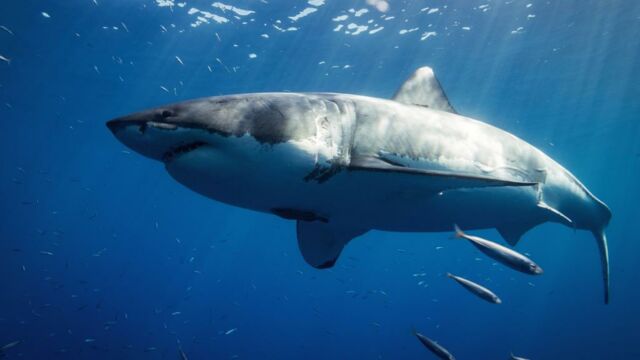This is the world's largest great white shark and she's 6 metres long

Deep Blue is the largest white shark ever observed by man and it’s gargantuan in size—even for a shark of its species.
The last time Deep Blue was seen was a few months ago, 15 kilometres off the coast of Hawaii in the Pacific. The female great white shark was seen peacefully devouring a dead sperm whale.
Discover our latest podcast
About Deep Blue
In 2013, Micheal Mayer first photographed the colossal shark and she then got her name Deep Blue. Based on the images captured, experts have estimated that she is between six to seven metres long. What’s even more fascinating is that she will continue to grow slowly until her eventual death.
More under this adMore under this adThese estimates make Deep Blue the largest great white shark to have ever been seen by humans, but it’s important to note that these unholy dimensions are still nothing compared to those of their ancestors—the now extinct megalodon which could reach up to three times its size.
According to scientists, this shark is about 50 years old, and given that the average lifespan of the species is 70 years, we’ll definitely be seeing Deep Blue around for at least a decade more. But how do we know when or where we will see her again?
More under this adMore under this adFinding Deep Blue
Well, normally scientists use GPS tracking on great white and tiger sharksto track their movements and examine their behavioural patterns. However, Deep Blue has not been embedded with the chip. To get a glimpse of this sea monster, scientists rely on something else.
More under this adMore under this adThe shark, like many of its relatives, often travel to very specific locations at different times of the year making their voyages predictable. Melanie Hutchinson, researcher at University of Hawaii told KHON2 a local channel:
They have been coming here forever. About 20 percent of the California and Mexican great white shark population migrate here [to Hawaiian waters] every year or two. So they're usually here in winter.More under this adMore under this ad
Given the sheer size of Deep Blue, spotting her amongst a crowd of identical white sharks is a simpleton’s task. But another thing that sets her apart is the unique pigmented patterns she has, especially on her pelvic and caudal fins.